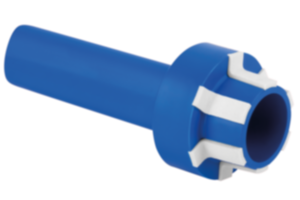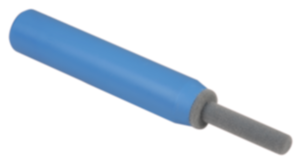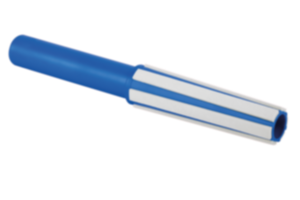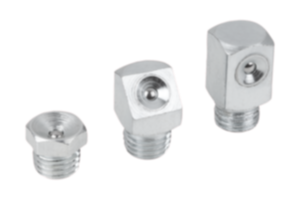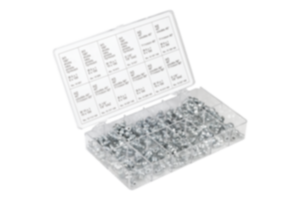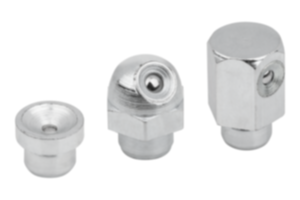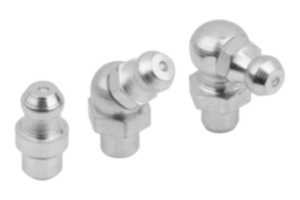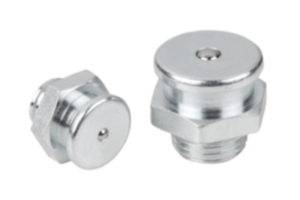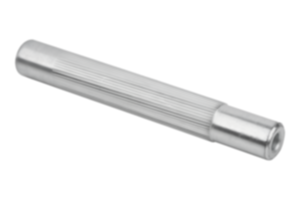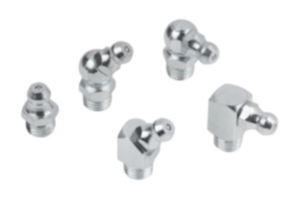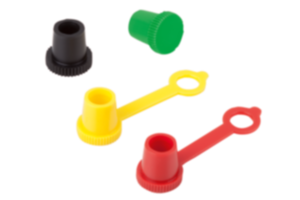Chains and sprockets
Roller chain:
norelem has many different DIN ISO 606 sprocket types in its product range.
The roller chains are differentiated by the link plate type (curved or straight) or by the material (steel or stainless steel). The roler chains are manufactured according to DIN ISO 606. Single chain links made from steel or stainless steel can also be found in the range. Over the years, roller chains have gained a leading roll in the market as far as steel link chains are concerned. This is mainly due to the fact that versatile kinematic tasks can often best be solved by the use of roller chains. In addition to drive tasks, roller chains can also be used as traction elements. They are also used in practice as transport chains, conveyor chains and/or lifting chains. Roller chains offer positive and non-slip power transmission. As a result, constant transmission ratios are possible. The roller chains work without any initial tension, therefore only low bearing loads occur. The direction of rotation always remains the same for a two sprocket chain drive. For a chain drive with more than two sprockets, economic solutions for the same or differing rotation directions can be easily solved. Chain speeds of 20 m/s and, in exceptional cases more are possible. With good lubrication, under normal operating conditions and at full load the efficiency of a chain drive is ca. 98% . The chains can be relatively easily shortened or extended and are also very resistant to dirt or external temperature influences. In automotive technology, for example, roller chains are used to drive a camshaft. Chains are also the most used transmission method on bicycles.
In combination with roller chains, drive sprockets are frequently used components in machine construction. This is mainly due to the fact that very large forces can be transmitted at low cost and without great effort. The sprockets differ in the number of chain strands. Only the frequently used simplex chain sprockets are available from norelem.
The toothing of the sprockets is standardized. norelem only supplies sprockets that are manufactured according to the current standard DIN ISO 606. This standard guarantees designers that certain dimensions will not change and the wear resistance is also specified. The customer has the advantage that a drive unit consisting of chain and sprocket mesh optimally with each other.
Sprockets
When selecting a suitable chain a designer should keep the following in mind:
- The power to be transmitted
- The speed of the smallest sprocket
- The operating conditions
Depending on these circumstances, the suitable chain / sprocket can be selected. The recommended minimum number of teeth on a sprocket is 17, which depends very much on the respective load. At higher loads, the smallest sprocket should have at least 21 teeth and, depending on the application also be hardened. In practice, odd numbers of teeth are often preferred (17, 19, 21, 23, 25, 27, 57, 95). The shaft spacing mostly lays between 30x and 60x the chain pitch, but is basically freely selectable. It should be ensured that the chain has a wrap angle of at least 120° on the small sprocket. It is also important that the sprockets are aligned and the shafts are parallel. The connecting link, which simply lays on the sprocket, ensures easy installation. Finally, it should be ensured that the chain sag depth is between 1-2% of the sprocket centre distance. When the elongation is >3% a chain replacement is recommended.
Regular maintenance of the individual chains guarantees maximum service life for the chain drive. Chains from norelem are supplied with corrosion protection and must be lubricated before commissioning. By regular and complete maintenance and lubrication, an operating life of 15,000 hours can be achieved. Different methods of lubrication are recommended according to the power being transmitted.
Highly viscous greases or oils are unsuitable for lubrication. These are too thick and often cannot penetrate between the chain and sprocket teeth (viscosity). Depending on the operating temperature, different lubricating oils classed according to the SAE viscosity grades should be used.
Low temperatures (-5 to +25 °C) SEA 30.
Medium temperatures (+25 to +45 °C) SAE 40.
High temperatures (+45 to +65 °C) SAE 50.








